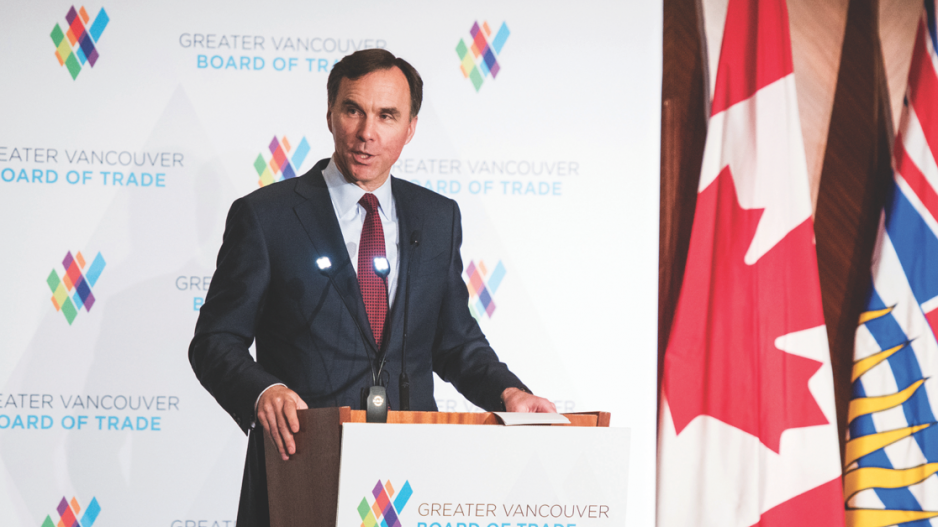Federal Finance Minister Bill Morneau’s third budget was greeted last week by some political observers as more of a social engineering strategy than a budget document.
The budget is long on social issues, such as Indigenous reconciliation and gender-based budgeting, and short on economics.
The budget’s social policies include a “gender-based analysis plus” approach that requires spending decisions to be viewed through a lens of removing barriers for women and girls.
As a starting point, the budget earmarks $1.4 billion in new financing over three years, through the Business Development Bank of Canada, for female entrepreneurs. There are also incentives aimed at getting more women into construction trades and other areas where they are currently under-represented.
While business groups applaud the removal of barriers and encouragement of more participation by women in the workforce and economy, they worry about two things that are distinctly absent from the budget: any plan to eliminate deficits or to deal with competition from the U.S., which is undertaking dramatic tax reforms.
“While the government expects the deficit to continue improving over the next five years, the streak of red ink is expected to continue,” noted the Conference Board of Canada.
The budget includes a reduction of small-business tax rates by one percentage point to 9% and revisions to a reviled plan to tax passive investments by private corporations.
Otherwise, there is little for businesses to get excited about, except perhaps those in the technology sector.
One of the most significant items in Morneau’s budget is more than $3 billion over five years for science and research, which Morneau said is “the single largest investment in investigator-led fundamental research in Canadian history.” There is also $700 million for the Industrial Research Assistance Program, which is one of the most important federal programs for high-tech companies.
The budget increases the rental financing initiative to $3.75 billion from the previous $2.5 billion over three years to provide 14,000 new purpose-built rental units across Canada.
Otherwise, there’s not much in the areas of housing, transportation or child care that wasn’t previously announced in 2016 in a three-year plan.
Whether any of that federal funding has begun to flow to the B.C. government yet is unknown. When asked, the B.C. Ministry of Finance was unable to answer how much, if any, of the federal funding has been released to B.C. to date.
Morneau’s third budget projects a deficit of $18 billion in 2018-19 and plans to lower but not eliminate the deficit. The government is sticking to a debt-to-GDP ratio of 30%, which economists and business leaders feel is prudent.
“We’re big fans of the debt-to-GDP ratio,” said Iain Black, president of the Greater Vancouver Board of Trade. “We concur with the government that that is a meaningful measuring stick and that they are doing well by that measurement.
“Having said that, we remain concerned about the federal deficit because there’s not even a meaningful conversation about when that’s going to end.”
The board of trade and other business organizations are also worried that the budget gives no consideration to Canada’s relative competitiveness, in light of radical tax cuts south of the border and possible trade disruptions, should the North American Free Trade Agreement fall apart.
But as University of British Columbia economics professor Kevin Milligan points out, the U.S. is implementing tax cuts that will reduce government revenue at a time when its deficit is ballooning. So in the long term, Canada may be better situated than the U.S. when it comes to balancing its books.
“The overall budget framework, I think, is a very sustainable one,” he said. “The deficit is less than 1% of GDP. The debt-to-GDP ratio is trending downward, which is what you want at this point in the business cycle.
“In contrast, in the United States, theirs is going upwards sharply and it is not sustainable, whereas I think ours is extraordinarily sustainable on the path that we’re on.”
As for areas of greatest concern for B.C. – housing affordability, transportation and child care – federal capital funding for those areas was set in the 2016 and 2017 budgets.
To date, the federal government has allocated $32 billion of the $180 billion it had committed (over 12 years) in 2016.
While only $210 million was allocated for public transit in 2017-18, $683 million is expected to be spent in the coming 2018-19 fiscal year, $1.4 billion in the next year and $1 billion more the year after that.
Roughly equivalent amounts are earmarked for “green infrastructure,” which includes everything from traditional waste-water treatment projects to transmission lines.




